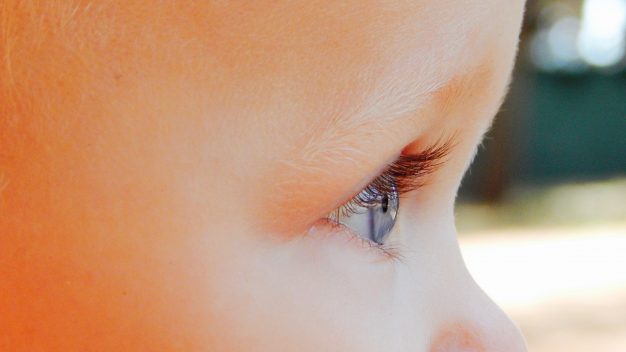
Baby foods take centre stage in push for more safety and quality
If we are what we eat, as the saying goes, food quality is key to our health. And as food production and trade increase in response to greater global demand, controls on safety and quality have become even more vital.
The impact of diet on health is hard to overstate. Obesity worldwide has almost tripled since 1975 and, in Europe, affects almost 60 per cent of adults and nearly one in three children. Diabetes is also on the rise and Europe has a markedly high number of children with type 1 – 295 000 in 2021.
Eating a varied and healthy diet can enhance overall well-being and reduce the risk of long-term illness. In addition, consumers are demanding greater food-chain transparency following food-fraud incidents such as the contamination of infant milk formula with melamine in 2008, the discovery of fipronil in eggs in 2017 and sporadic outbreaks of salmonella.
“Food safety systems in Europe are generally effective, but we believe that it is possible to further improve the safety and quality levels,” says Dr Erwan Engel, research director at the French National Institute for Agriculture, Food and Environment (INRAE).
Engel coordinates the EU-funded SAFFI project that brings together major research organisations and infant-food producers from Europe and China. With babies, children and young people being more vulnerable and needing high-quality nutrition to grow, the project is investigating ways to ensure greater safety in production, writes Daniela De Lorenzo, for the European Commission.
Other than breast milk, infant formulas and baby foods are the most important part of a child’s diet in the first year of life. Preventing microbial or chemical contamination in the processing chain is a priority.
60 million mouths
SAFFI is addressing food for the EU’s 15 million and China’s 45 million children under the age of three. The partners are focusing on four popular infant-food lines: formula, sterilised mixed vegetables with meat or fish, infant cereals and fruit purees.
The project has carried out tests on the premises of five participating international infant-food companies – Netherlands-based FrieslandCampina, HiPP in Germany, Greek producer YIOTIS and two Chinese companies, Beingmate and YFFC.
“
It is possible to further improve the safety and quality levels.
The aim is to identify the main risks from both microbial hazards, including bacteria, and potential chemical contaminants in the food chain.
Chemical contaminants include environmental pollutants such as dioxins or lead, crop-treatment residues like pesticides and substances generated during processing including furan.
‘We need to convince the industry that it is important to focus on chemicals too,’ said Engel. ‘Although the effects on health are not as immediate as for microbes, they can still be significant in the longer term.’
SAFFI also aims to help food producers and authorities predict where potential problems could arise and, as a result, reduce the threat of contamination at every stage of production.
Classical processes based on thermal treatments, for instance, could be replaced with pulse combustion dryers, radio frequency heating and high-pressure processing, which are better at sterilising foods while maintaining the optimal nutritional value of fresh products.
‘We check the effectiveness of these innovative processing technologies to control the growth, inhibition and inactivation of pathogens, as well as their ability to slow food degradation and limit the integration of certain chemicals,’ said Engel.
Healthy trade-off
The food and drinks sector, which includes foods for infants, is a major contributor to the EU economy with exports of €110 billion in 2019. By investing in training and sharing know-how, SAFFI will help to improve safety standards in the EU and China and reduce potential barriers to trade.
It will cooperate with other research projects under the EU-China Food, Agriculture and Biotechnology (FAB) Flagship Initiative, with all seeking continued improvement in food safety control.
Such cooperation can increase EU-China commerce and give European food companies greater opportunities to expand on the international market. In addition, the standards laid down by SAFFI in the infant-food sector could be extended to other food categories, according to Engel.
When it comes to health, food variety and quality also count. A balanced diet can help prevent illnesses from arising in the first place. It can also enable people with serious diseases to heal and have more stable lives.
Laser technology can work with very small samples
However, people respond differently to the same foods or nutrients, depending on genetic and lifestyle factors. These include stress, exercise levels, individual microbiome composition and exposure to environmental toxins.
The EU-funded NUTRISHIELD project has set out to create personalised diets tailored to individual biomarkers, with a particular focus on children with obesity and/or diabetes and on lactating mothers.
The project is analysing a range of biomarkers related to nutrition and health disorders, taking into account the way each child responds to different nutrients and food types.
NUTRISHIELD involves research and clinical partners from across Europe. The project is coordinated by a Swiss company called Alpes Lasers, which has developed specialised mid-infrared laser technology for use in clinical settings.
Laser-sharp
“Unlike current processes used to analyse body fluids, laser technology can work with very small samples of urine – a necessity when little patients can only produce minimal quantities,” said Miltos Vasileiadis, business developer and project manager at Alpes Lasers.
The company has provided project partners with laser technology used to build analysers for urine, breath and human milk. Samples collected are analysed at a molecular level, allowing nutritionists to give detailed, personalised and easy-to-follow advice.
This may include the amount of each food group an individual needs and how often, how much exercise and sleep are necessary and even which particular variety of fruit or grain is required for proper nutrition.
A study on young diabetes patients is running at the San Raffaele Hospital in Milan, Italy, while the Health Research Institute Hospital La Fe in Valencia, Spain is working with lactating mothers and newborns. Studies conducted at Radboud University in the Netherlands aim to understand how nutrition can assist and enhance cognitive development in children.
The tools developed by NUTRISHIELD are designed to be portable and easy to use, making biomarker analysis faster and more cost-effective. In the longer term, these could be used in different medical settings to assist patients of any age.
FOOD 2030
The EU’s FOOD 2030 research and innovation policy aims to transform food systems and ensure everyone has enough affordable, nutritious and safe food to live a healthy life.
The initiative covers the entire food system, linking primary production sectors (such as agriculture and fisheries) to food processing, retail and distribution, packaging, waste and recycling, catering services and consumption.
Click here for more about FOOD 2030.
This article was originally published in Horizon, the EU Research and Innovation magazine, and republished under Creative Commons Licensing.




